Here are four different ways chemists use to show a molecule of ammonia. In the colored molecule models, nitrogen is blue and hydrogen is white.
Click on image for full size
Windows to the Universe original artwork by Randy Russell.
Ammonia - NH3
Ammonia is a kind of gas.
Ammonia molecules (NH3)
have hydrogen and nitrogen atoms
in them.
The air you breathe has a tiny bit of ammonia in it. When plants and animals
die and decay, they give off ammonia. Ammonia is part of the Nitrogen
Cycle.
Ammonia can sometimes help get pollution
out of the air. Sometimes the air has acids
like nitric acid
and sulfuric acid
in it. They make acid rain, which
hurts plants and fish. Ammonia combines with these acids to make other chemicals.
Those chemicals are solids called particulates,
which fall out of the air.
Humans make and use lots of ammonia. We use it to make fertilizer and explosives.
It is also in window cleaning products.
You might also be interested in:
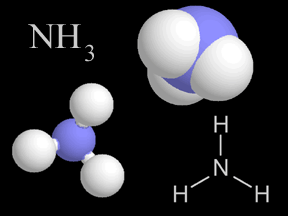
Most things around us are made of groups of atoms bonded together into packages called molecules. The atoms in a molecule are held together because they share or exchange electrons. Molecules are made
...more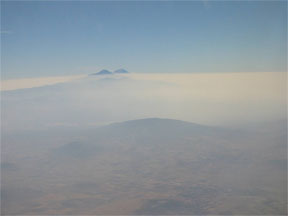
What do smog, acid rain, carbon monoxide, fossil fuel exhausts, and tropospheric ozone have in common? They are all examples of air pollution. Air pollution is not new. As far back as the 13 th century,
...more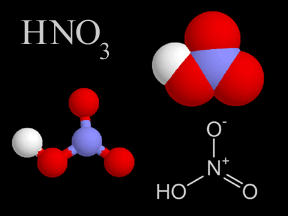
Nitric acid is a very strong acid that can burn your skin. Nitric acid has nitrogen, oxygen, and hydrogen atoms in it. There is a very tiny bit of nitric acid gas in Earth's atmosphere. Nitric acid is
...more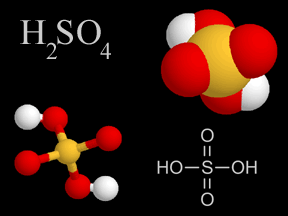
Sulfuric acid is a very common type of acid. Acid rain has sulfuric acid in it. Acid rain harms plants, fish, and other living things. A type of air pollution causes acid rain. When people burn fossil
...more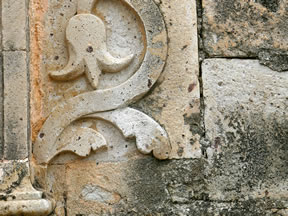
Acid rain is a general term used to describe different kinds of acidic air pollution. Although some acidic air pollutants return directly back to Earth, a lot of it returns in rain, snow, sleet, hail,
...more
When you look up at the sky, you are looking at more than just air. There are also billions of tiny bits of solid and liquid floating in the atmosphere. Those tiny floating particles are called aerosols
...more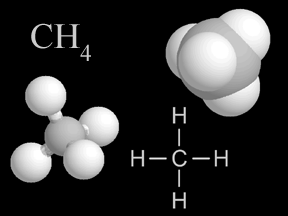
Methane is a kind of gas. There is a small amount of methane in the air you breathe. A methane molecule has carbon and hydrogen atoms in it. Methane is a greenhouse gas. That means it helps make Earth
...more














